ECG lighting workplace
In the office where I spend my working time, there are no windows to the street, so the lighting is entirely on fluorescent lamps mounted on the ceiling. Alas, but I have rather sensitive eyes, so I notice a flicker and by the end of the day I feel a bit broken. I partially solved the problem by buying a high-quality table lamp, and then special computer glasses with yellow lenses.

Recently, a colleague told that standard ballasts are used in low-priced ballasts (ballasts), and that, if desired, they can be replaced by more advanced electronic ballasts (electronic ballasts). The advantages over conventional start-up are in the rapid ignition of the lamps, the absence of the characteristic sound from the choke, the filter that removes flicker, and also a more gentle treatment of the lamps.
')
After reading the description on Wikipedia, as well as being impressed by the colleagues' stories, the next day I bought two electronic ballasts (myself and my wife), the first to come to a local flea market for 18-watt T8 lamps. One set at once, and immediately noticed that I did not see annoying flicker, and the lamps began to shine brighter. A couple of days later I connected the second electronic ballast to the lamp above my wife’s workplace, at the same time I decided to take a picture of the whole process. You may find this article trivial and amateurish, but for me personally, and for a few of my colleagues, this knowledge was new.
Before starting work, I measured the luminous flux, it turned out about 405-407 lux. Although I install electronic ballasts mainly for the purpose of getting rid of flicker, it is more accurate to increase its frequency, but the changes in brightness are also interesting, because the electronic efficiency has a higher efficiency.
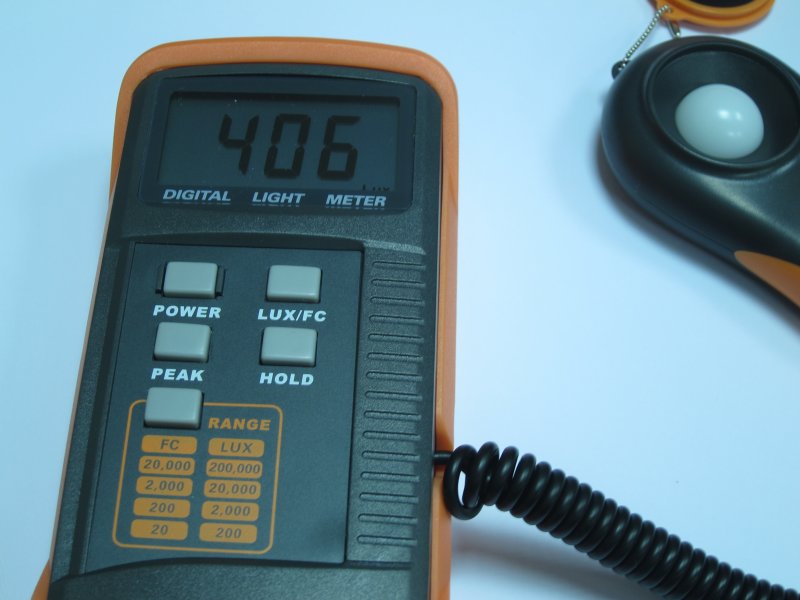
So, the diffuser is removed, the lamps are unscrewed, now a “bare” lamp is hanging on the ceiling. It has an adapter for the power cable going under the hinged ceiling (sticking out of the hole in the center), two control gears, as well as additional voltage converters (not strong in electrics, so I don’t know their role for sure). All this wealth is connected to the contacts for the lamps with the help of wires and generously flavored with years of accumulated dust.

Turning off the overhead light and unscrewing the clips from the power supply (if you do, do not forget to check the presence of voltage with a screwdriver-tester and protect the bare contacts while working with electrical tape), pulled the lamp out of the suspended ceiling and laid it on the floor. The faithful assistant immediately wiped it from dust / dirt, since when installing the previous electronic ballast I noticeably appreciated (in the photo only the beginning of the bath).
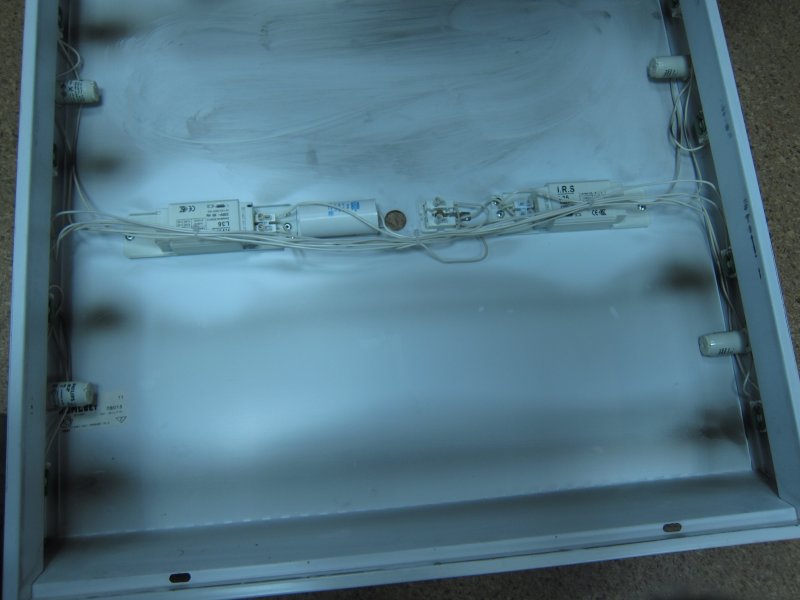
Having broken off the fasteners with nippers, pulled out all unnecessary stuffing from the lamp, having previously disconnected the wires from the devices, as they will be needed in the future. The only thing that remains and is not useful is an adapter for the power cable. In the last installation I used it, because there was no land in that wiring. This time there was grounding, so I connected the wires directly to the electronic ballast, because the adapter only grounds the luminaire body.
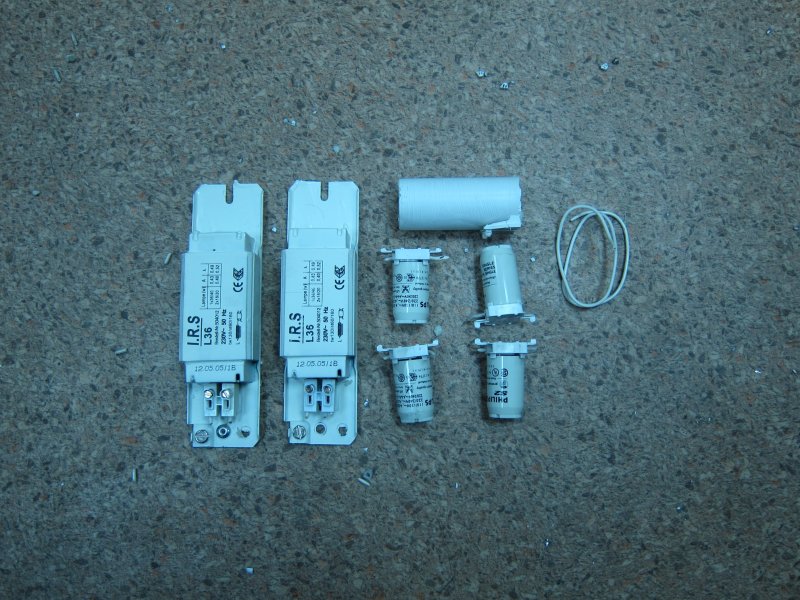
Drills and drills were not at hand, so the holes in a thin tin spun screwdriver and sharp screw. It took two new holes for the dimensions of the new ECG mountings. After that, he fastened the device with two wide and short chopped screws, held tightly and did not give in to moderately strong jerking.

Then he connected the contacts of the lamps to the electronic ballast according to the scheme drawn directly on the body. Almost all the wires installed on the luminaire were used in the course, here and there they had to be cut and vice versa lengthened, for these purposes stocked up with connecting elements. He fixed all the noodles through the holes left over from the previous devices with small ties and more or less carefully put them on the body. The cover itself was carefully returned to its place and fastened the wires of the power cable to the electronic ballast.
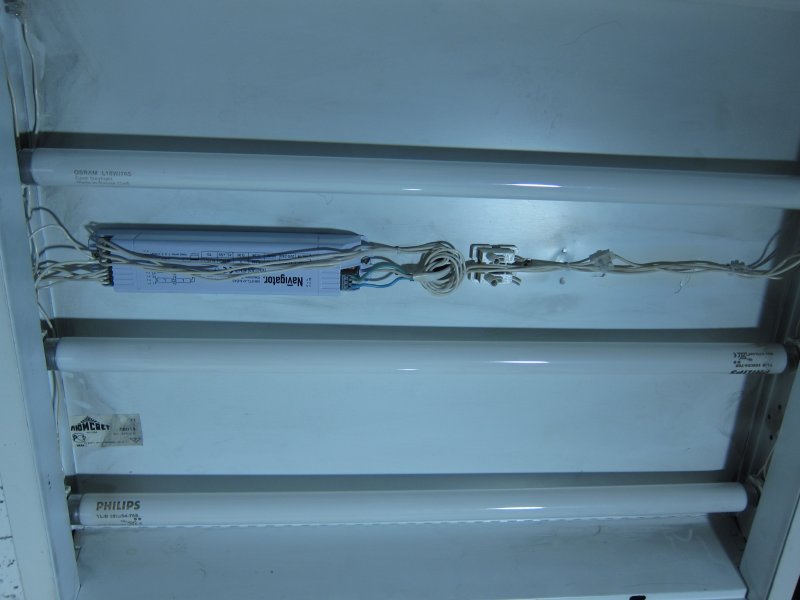
The first switching on and the result is evident, firstly, the promised silent and almost instantaneous switching on, secondly, the flickering of the lamps imperceptible by sight (on the camera, with the shooting button for focusing the frame half-pressed, the blinking is still visible, but it is not so “aggressive” , as with the adjacent luminaires with PRA), and, finally, even by eye there is a noticeable increase in brightness, which the luxmeter confirmed, showing 445-447 lux.
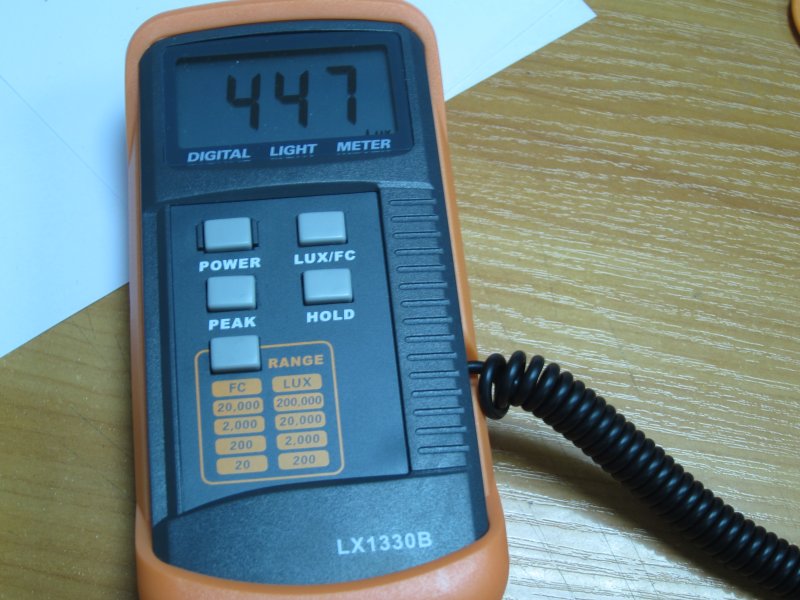
Of course, to provide good working conditions is an employer's task, but even if you are not lucky with your workplace, you should not leave everything as it is. So, the installation of electronic ballasts does not require much effort and some special qualification, at the same time, after connecting it, your eyes will surely say thank you, but vision is one of the main problems of an IT person.
Addition: I have no formal requirements for choosing an electronic ballast, everything that I have operated on is a unit price of 200-250 rubles for the device itself. Specifically, I bought myself a model Navigator 94449, but was guided only by the fact that it was the only model available on the local classifieds site that fits the characteristics of my lamp. Also in the first comment jhonyxakep warns about the pitfalls of the company ASD.

Recently, a colleague told that standard ballasts are used in low-priced ballasts (ballasts), and that, if desired, they can be replaced by more advanced electronic ballasts (electronic ballasts). The advantages over conventional start-up are in the rapid ignition of the lamps, the absence of the characteristic sound from the choke, the filter that removes flicker, and also a more gentle treatment of the lamps.
')
After reading the description on Wikipedia, as well as being impressed by the colleagues' stories, the next day I bought two electronic ballasts (myself and my wife), the first to come to a local flea market for 18-watt T8 lamps. One set at once, and immediately noticed that I did not see annoying flicker, and the lamps began to shine brighter. A couple of days later I connected the second electronic ballast to the lamp above my wife’s workplace, at the same time I decided to take a picture of the whole process. You may find this article trivial and amateurish, but for me personally, and for a few of my colleagues, this knowledge was new.
Before starting work, I measured the luminous flux, it turned out about 405-407 lux. Although I install electronic ballasts mainly for the purpose of getting rid of flicker, it is more accurate to increase its frequency, but the changes in brightness are also interesting, because the electronic efficiency has a higher efficiency.

So, the diffuser is removed, the lamps are unscrewed, now a “bare” lamp is hanging on the ceiling. It has an adapter for the power cable going under the hinged ceiling (sticking out of the hole in the center), two control gears, as well as additional voltage converters (not strong in electrics, so I don’t know their role for sure). All this wealth is connected to the contacts for the lamps with the help of wires and generously flavored with years of accumulated dust.

Turning off the overhead light and unscrewing the clips from the power supply (if you do, do not forget to check the presence of voltage with a screwdriver-tester and protect the bare contacts while working with electrical tape), pulled the lamp out of the suspended ceiling and laid it on the floor. The faithful assistant immediately wiped it from dust / dirt, since when installing the previous electronic ballast I noticeably appreciated (in the photo only the beginning of the bath).

Having broken off the fasteners with nippers, pulled out all unnecessary stuffing from the lamp, having previously disconnected the wires from the devices, as they will be needed in the future. The only thing that remains and is not useful is an adapter for the power cable. In the last installation I used it, because there was no land in that wiring. This time there was grounding, so I connected the wires directly to the electronic ballast, because the adapter only grounds the luminaire body.

Drills and drills were not at hand, so the holes in a thin tin spun screwdriver and sharp screw. It took two new holes for the dimensions of the new ECG mountings. After that, he fastened the device with two wide and short chopped screws, held tightly and did not give in to moderately strong jerking.

Then he connected the contacts of the lamps to the electronic ballast according to the scheme drawn directly on the body. Almost all the wires installed on the luminaire were used in the course, here and there they had to be cut and vice versa lengthened, for these purposes stocked up with connecting elements. He fixed all the noodles through the holes left over from the previous devices with small ties and more or less carefully put them on the body. The cover itself was carefully returned to its place and fastened the wires of the power cable to the electronic ballast.

The first switching on and the result is evident, firstly, the promised silent and almost instantaneous switching on, secondly, the flickering of the lamps imperceptible by sight (on the camera, with the shooting button for focusing the frame half-pressed, the blinking is still visible, but it is not so “aggressive” , as with the adjacent luminaires with PRA), and, finally, even by eye there is a noticeable increase in brightness, which the luxmeter confirmed, showing 445-447 lux.

Of course, to provide good working conditions is an employer's task, but even if you are not lucky with your workplace, you should not leave everything as it is. So, the installation of electronic ballasts does not require much effort and some special qualification, at the same time, after connecting it, your eyes will surely say thank you, but vision is one of the main problems of an IT person.
Addition: I have no formal requirements for choosing an electronic ballast, everything that I have operated on is a unit price of 200-250 rubles for the device itself. Specifically, I bought myself a model Navigator 94449, but was guided only by the fact that it was the only model available on the local classifieds site that fits the characteristics of my lamp. Also in the first comment jhonyxakep warns about the pitfalls of the company ASD.
Source: https://habr.com/ru/post/193796/
All Articles